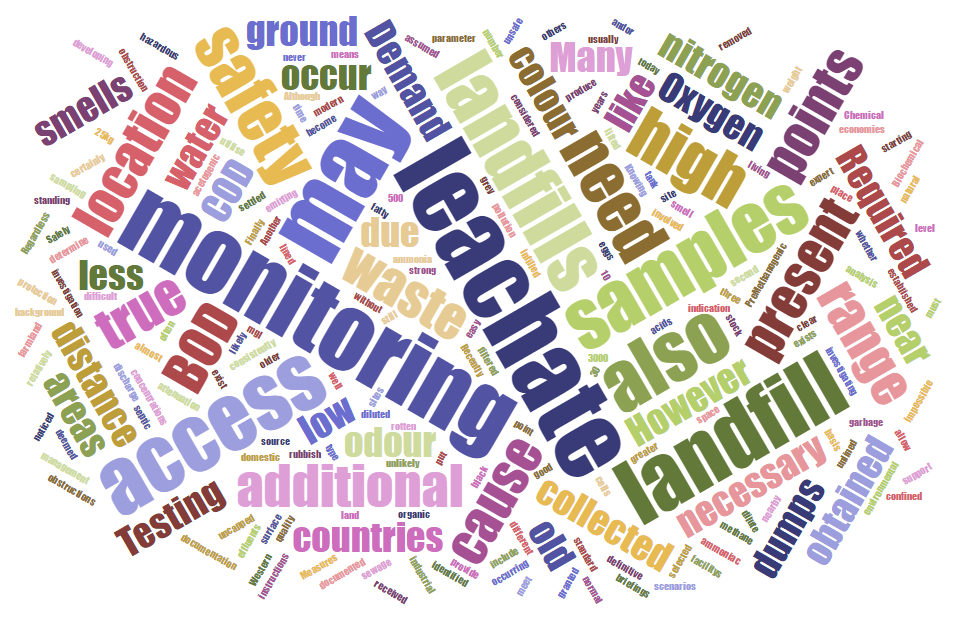Lets work together



Suite 3A, Chapel Allerton House, 114 Harrogate Road, Leeds, LS7 4NY
ukinfo@integrated-skills.com
+44 (0) 3300 888 670

If it has been noticed that the leachate in a facility is emitting an odour, it is often assumed that the cause is contamination. However, contamination may not be the cause. Knowing the true cause of odour or investigating possible contamination of the leachate in a facility would be impossible without additional parameters. Although they may not be definitive, they do provide a good starting point for those involved in an investigation of possible pollution in or near a landfill.
Methanogenic Waste Landfills
Landfills producing methane, or methanogenic landfills, can utilise three different parameters to determine whether or not contamination exists.
Salinity in a relatively high range of methanogenic leachate when compared to that of organic industrial effluents or domestic sewage can indicate contamination.
The second parameter is a BOD (Biochemical Oxygen Demand), which is low when compared to COD (Chemical Oxygen Demand), and/or a BOD that is consistently at 10% less than the COD.
Finally, leachate with high nitrogen and ammonia concentration in a range between 500 and 3,000 mg/l is an indication that contamination may be present.
It should be considered that any samples collected a distance from the source of leachate may have become diluted. Also, samples collected at a distance may have settled and filtered due to attenuation.
Pre-Methanogenic Leachate
Recently in-filled waste cells of older landfills, or modern, lined landfills that are producing acetogenic leachate will produce a strong smell due to its high concentrations of fatty acids. Where testing at these sites is required, it is unlikely that an analysis of water quality will be necessary.
Contamination may almost certainly be present if the leachate is grey in colour and smells like rubbish (garbage), or if it is black in colour and smells like rotten eggs.
Additional Samples may be Required
It is true that the methanogenic waste landfill is the most common type of landfill used today by most developed countries. However, it is also true that many unlined and uncapped landfill dumps still do exist, especially in less well developed economies. Many of these dumps can be over 30 years old, which means that nearby ground and surface water contamination will have been occurring for some time.
For this old and dilute leachate, additional samples may need to be obtained by the sampling expert. These samples will need to be obtained from the same location where the natural background range of contamination is usually established.
Salinity, low BOD and high ammoniac nitrogen concentration can also be present near farmland, especially where stock are living on the land. They can also occur in areas of septic tank discharge.
Testing Safely
Regardless of the number of location of monitoring points in a landfill, all should have been selected on the basis of safety. All monitoring points should be clear from obstruction and allow personnel and their equipment easy access.
Should there be monitoring points which are more difficult to access than others, or those which are deemed unsafe in any way, these need to be identified in the facility’s environmental management and monitoring programme documentation. Measures for the protection of the health and safety of monitoring personnel put in place should also be documented in the monitoring programme. Only after personnel have received the instructions, training and support necessary to access hazardous monitoring locations should access to these locations be granted.
Common scenarios that indicate a need for training or briefings on health and safety include areas where equipment must be lifted or obstructions greater than 25kg in weight removed. Another is where the only access to a monitoring location is through a confined space, or where access cannot occur by standing at normal ground level. And in developing countries where the landfill site is most likely never to meet a Western safety standard!
Would you like to know more about Identifying and Confirming Leachate Contamination? Fill in your details below and let us know how we can help.
Website Designed & Built by we are CODA